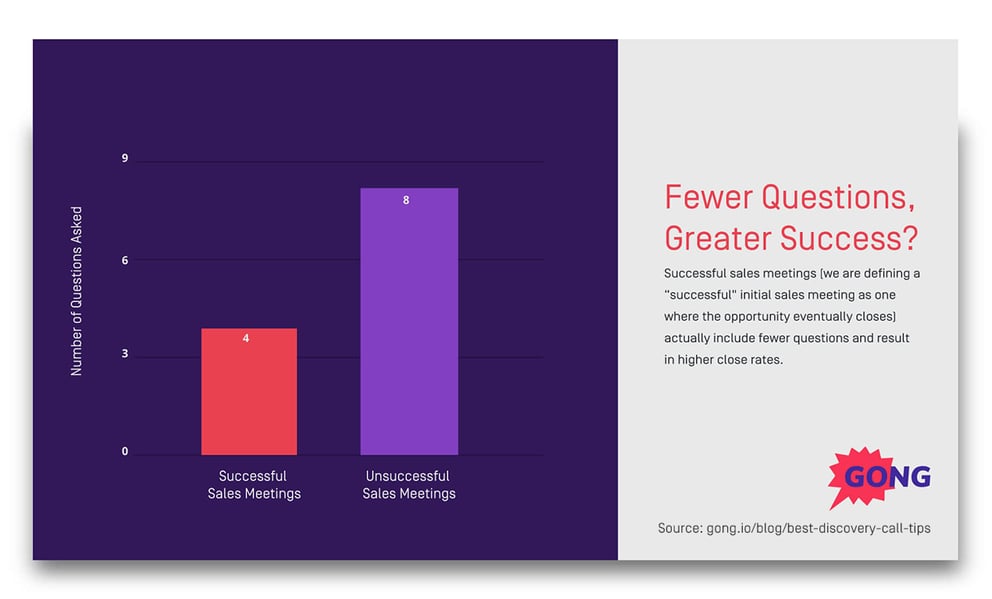May 16, 2019
 by Ryan Abramson / May 16, 2019
by Ryan Abramson / May 16, 2019

Sales Rep: “Who will be making the final decision on your end?...Oh, your CXO? Would they be open to joining our next call?”
Prospect: “No, just send me the information and I’ll make sure Susan gets it.”
This isn’t an unfamiliar situation. It’s often how the first call with a lower-level prospect ends (for the purpose of this article, let’s call these “lower level prospects” executors). We ask who has the authority to buy our product and then ask for a meeting with that executive.
In return, what do we get?
A request to send over our marketing deck and every other piece of information needed by the prospect in order to sell this internally. Upon sending the information, the prospect takes the long, treacherous hike to the executive gates of Mordor and feeds our collateral to the incinerator.
In order to make our way to decision makers, we need to evaluate why it’s important to have executive alignment. We also need to understand tactics that are sure to get us boxed out from executive offices. Then we can define the best process to get a C-Level meeting and review the techniques to nail it.
Executive alignment (as it pertains to a sales cycle) is the process of working directly with decision makers to match project outcomes with their (prospect) business objectives.
Read on as we explore a few of the reasons it’s so important.
| Related: Learn the important difference between goals and objectives to support your executive alignment! |
Priorities are generally delivered top down. An executive lays out goals and their team will execute the activities and programs needed to achieve them. Unless your project gets exec level buy-in or meets a current priority, the road to close will be arduous.
Holding an executer accountable to your timeline is very difficult. Reason being, they are accountable to their KPI’s and their executive’s goals. If your project becomes an executive priority, accountability becomes much simpler.
Closing a deal is cool. Closing a project which moves your customer’s business forward is cooler. Without executive alignment, projects fall flat and are at risk for churn. Worst case, the deal is clawed back, you lose commission, and your company is further away from revenue goals. Executives have the ability to prioritize projects (1) and hold their team accountable (2) for delivering success (3).
|
TIP: Increase the chance of your sales success using G2 Buyer intent data. Source more leads, close more deals, and watch the revenue go up. |
Sometimes, the what-not-to-do is just as (if not more) important. Before we discuss the tactics that work, we’ll warn you about the ones that won’t.
Asking your executer to bring their boss to your next meeting is guaranteed to fail. Their executive does not have time to join every vendor pitch the team is reviewing. You are not the only vendor they are evaluating. You are also not the only tool or project they are working on. Imagine if the CXO joined every vendor meeting. Their company would be out of business faster than you can say, “Series B.”
Executors want credit. They are likely motivated by recognition, hitting targets, and being seen as a thought leader within their group/company. If you go right for their boss, they will feel slighted and defensive. This is my project and if it gets done, I’m getting the credit. In reality, this sounds like “funnel all communications about your solution through me. I’m the decision maker.” Or “My boss trusts me to make the right decision for our company.” If you hear these things, you know your executive alignment tactics are NOT working well.
Reaching out to an executive when you are already talking to their team is one way to piss off everyone involved. It’s not a good look once it gets back to their team and it’s a waste of time (yours and theirs) when you inevitably get pushed down to the same person.
Don’t get too discouraged. Next up, we’ll cover some methods that will set you on the path to executive alignment.
Here is how to get a meeting with the Executive once you are talking to someone on their team.
As your discovery call is coming to an end, try one of these.
Discovery doesn’t end after the first 5 minutes of your call. It continues throughout the call and is especially important at the end.
|
Instead of asking them to bring Susan to the next meeting, try this.
“Sounds like Susan really trusts her team to make good decisions and find the right projects to move forward with. It’s great to hear that Susan really cares about ValueAdd XYZ. I’d recommend you and I chat again at the end of this week. During that time, we can develop some content and craft an agenda for a meeting that Susan would find relevant.”
Wait for their response. If they respond with a “Yes,” you’re good. If they are hesitant, justify your ask.
“The reason I ask is because our least successful customers are the ones that don’t have executive level sponsorship. In order for this to really work, we want to make sure Susan views this as a priority and will express that to those will execute on it. Otherwise, you will have a really hard time seeing success with [my company]” You can always try the reverse of this tactic which would be “Our most successful customers…”
Or, “When executives see our platform live, they develop questions and concerns that can’t be found when reading a deck. Having the opportunity to discuss our platform live will lead us on a path to success. It’s hard to find that path without having spoken about executive level use-cases.”
Or try, “The reason I ask is because our product touches multiple departments. Without exec level buy-in, it’s hard for us to know that the other groups involved will support your decision. The last thing we want to do is launch a project that falls flat.”
For each sale, take time to figure out why you need executive buy-in. At G2, it’s really important for us because our product touches multiple departments. If we don’t have an executive that can bridge the communication between teams, our programs won’t be executed with success.
When you make it to the C-Level, you have one shot to wow them. Doing discovery on a meeting with a C-level executive is a recipe for disaster.

Instead, show an executive that you understand their business. Stalk their company’s website, check social media, news, read their 10k (if they are public). Doing this research will allow you to speak knowledgeably about their business. It will also help you create the use case of how your solution fits with the current state of their business.
You’ve already done a discovery call with their team. What can you bring to an executive to make them say “Holy Cow”? That’s how you get your product prioritized.
|
At G2, we show them a few things: 1. Net new opportunities and current marquee customers are reading reviews on G2 2. Their current customers did research on G2 in order to make a purchase decision or they are coming up for renewal and are looking at the competition 3. Deals they are working on with prospects right now are shopping on our site |
Executives care about P & L. They can’t ignore the chance to drive more revenue or save current revenue from churning. If your messaging is super strong and your use case is powerful, you can say something like “based on seeing XYZ, how is this something your team can afford to ignore?”
If you aren’t helping someone meet their goals and achieve their KPI’s, you are always going to be a “nice to have.” By focusing on why your company needs executive alignment, implementing the right tactics to get there, and nailing the meeting once you arrive – you will achieve the results you seek. Remember, all deals are different. This isn’t a prescription, it’s simply a recommendation that can help guide you in making a difference with executives.
Need help securing that first vision call? Learn how to upgrade your sales prospecting strategy here.
Ryan Abramson is RVP of Sales at G2.com He cares about creating a better experience for buyers by providing winning sales advice. He won a reality TV cooking show and has never dropped a pass playing backyard football.
What comes to mind when you hear the term “real estate”?
 by Izabelle Hundrev
by Izabelle Hundrev
Real estate buyers, like most other consumers, begin their buying journey online.
 by Izabelle Hundrev
by Izabelle Hundrev
What comes to mind when you hear the term “real estate”?
 by Izabelle Hundrev
by Izabelle Hundrev


